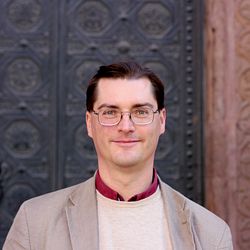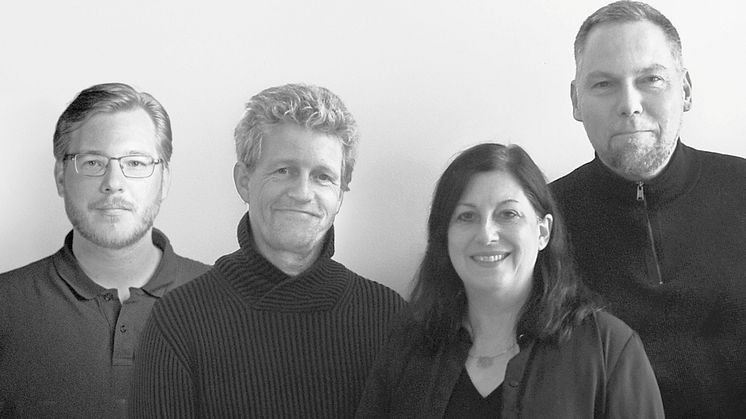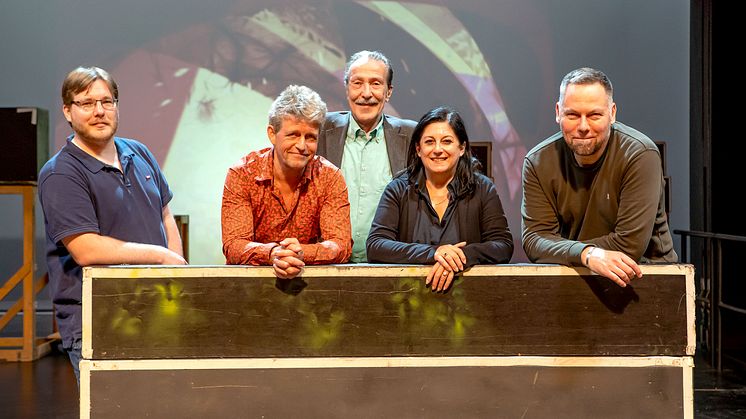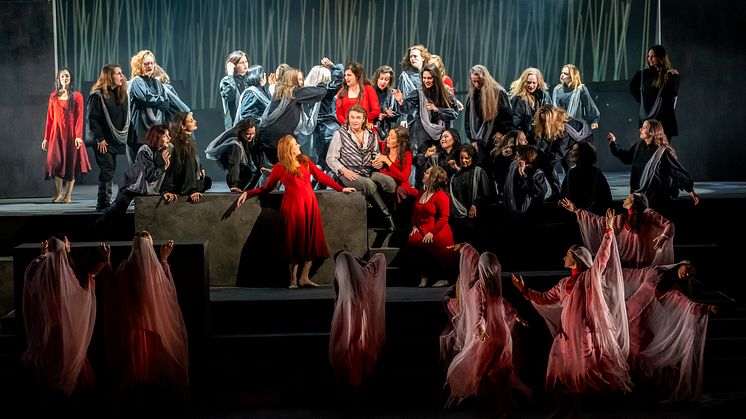
Press release -
Making history >>> Documentation on Goetheanum ‘Parsifal’ production
Goetheanum, Dornach, Switzerland, 4 March 2025
The staging of Richard Wagner’s opera ‘Parsifal’ at the Goetheanum under director Jasmin Solfaghari has made history by including eurythmy. It also brought together art and science. The book on ‘Parsifal’ at the Goetheanum offers multiple glimpses, personal and professional, into this complex undertaking, a cooperation of Schott Music and Pamy Media Productions.
Even rehearsals were extraordinary because it was possible to use the original stage set for seven weeks, allowing opera director Jasmin Solfaghari to work closely with stage and costume (Walter Schütze), music (Roland Fister), eurythmy (Stefan Hasler), and light design (Klaus Suppan).
One of the main questions for Jasmin Solfaghari was how to integrate the eurythmy. “Will the singers, who are telling the story anyway, be eclipsed by the eurythmy? How can the eurythmy be made to harmonize with the singers?” Speaking of the rehearsals, the philologist, musicologist and philosopher Lea Zeiger says that there was always “some concern about a collision between the eurythmists and the protagonists.” To enable the singers and choir to fully concentrate on their parts, the eurythmy was only brought in later. The reviews praised the idea of having the spear, the grail and the swan represented in eurythmy. While eurythmists are used to being integrated in dramatic events, they had to cope with unusual spatial conditions in this case. Stefan Hasler describes the challenge of the “precise division and architectural impact of the stage. […] Often the eurythmy forms had to be greatly reduced because there was so little space.” Focusing on the “overarching gesture in the wider context of the story” was essential.
Walter Schütze brought elements of the Goetheanum into the stage design, for instance by including the auditorium: the coloured glass windows were only darkened when all audience members were in their seats. The different way of dealing with space and colour was another task that needed to be mastered. “With eurythmy, the colours on stage often correspond to those of the costumes. In opera on the other hand one prefers contrasts,” says Walter Schütze, adding that “as a basic colour in eurythmy a very dark blue is often used, which almost appears as grey at first sight, but which is composed of fourteen layers of colour that reappear in the different coloured lights.” Schütze added that this corresponded to his own approach “when I design a silver-grey space.”
Jasmin Solfaghari as well as the stage workers and technicians speak openly about the challenges they encountered, including the image of men and women in ‘Parsifal‘. Topics such as ‘Anthroposophy and Wagner’, ‘The History of Eurythmy’, and the ‘Parsifal’ productions in the Bayreuth Festival Theatre in Germany are also addressed. These underlying contexts illustrate Jasmin Solfaghari’s way of connecting art and science, for instance by collaborating with the Institute of Musicology at Tübingen University in Germany.
(2974 characters, 467 words/SJ; English by Margot M. Saar)
Book (in German) Jasmin Solfaghari (ed.): Ich schreite kaum, doch wähn’ ich mich schon weit. Parsifal am Goetheanum [I scarcely tread yet seem to have come far. Parsifal at the Goetheanum], Schott Music 2024, 272 pages, Euro 34,50 Web (in German)
Contact person Goetheanum Stage François Croissant
Topics
Categories
The Goetheanum is the headquarters for the School of Spiritual Science and the General Anthroposophical Society. The School of Spiritual Science with its eleven sections is active worldwide in research, development, teaching, and the practical implementation of its research findings and is supported by the Anthroposophical Society.




